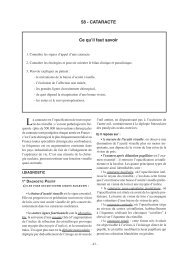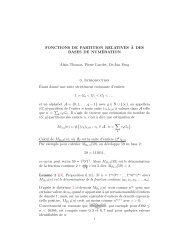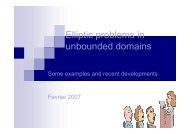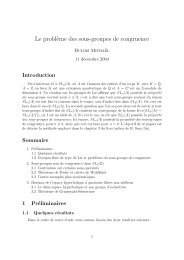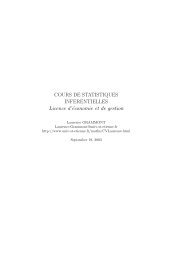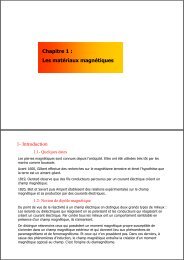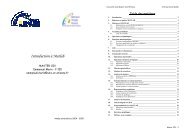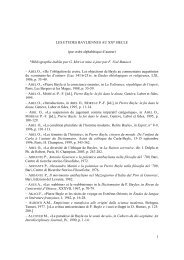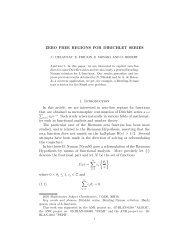COURS DE PROBABILITE 2i`eme année d'économie et de gestion ...
COURS DE PROBABILITE 2i`eme année d'économie et de gestion ...
COURS DE PROBABILITE 2i`eme année d'économie et de gestion ...
You also want an ePaper? Increase the reach of your titles
YUMPU automatically turns print PDFs into web optimized ePapers that Google loves.
30CHAPTER 3.COUPLE <strong>DE</strong> VARIABLES ALÉATOIRESCONTINUESlimx→+∞y→+∞F X,Y (x, y) = 1lim F X,Y (x, y) = 0y→−∞lim F X,Y (x, y) = 0x→−∞PropriétésSi F X est la fonction <strong>de</strong> répartition <strong>de</strong> X <strong>et</strong>F Y la fonction <strong>de</strong> répartition <strong>de</strong> Y ,F X (x) = lim F X,Y (x, y)y→+∞F Y (y) = lim F X,Y (x, y)x→+∞Dans le cas d’une variable continue, on pouvait calculer la probabilité <strong>de</strong>sévénements {a < X ≤ b} avec la fonction <strong>de</strong> répartition : P (a < X ≤ b) =F (b) − F (a).Est-ce le cas ici ?Question : que vaut P [a < X ≤ b, c < Y ≤ d] ?F X,Y (b, d) = P [] − ∞, b]∩] − ∞, d]]= P ((] − ∞, a]∪]a, b]∩] − ∞, d]))= P (] − ∞, a]∩] − ∞, d]) + P (]a, b]∩] − ∞, d])= F (a, d) + P (]a, b]∩] − ∞, c]) + P (]a, b]∩]c, d])or F (b, c) = P (] − ∞, b]∩] − ∞, c]) = P (] − ∞, a]∩] − ∞, c]) + P (]a, b]∩] −∞, c])d’où P (]a, b]∩] − ∞, c]) = F (b, c) − F (a, c)AinsiP (a < X ≤ b, c ≤ Y ≤ d) = F (b, d) − F (b, c) + F (a, c) − F (a, d).Mais c’est une formule difficile à r<strong>et</strong>rouver.C’est pourquoi on préfèrera passer par la fonction <strong>de</strong>nsité conjointe pourcalculer les probabilités.3.2 Fonction <strong>de</strong>nsité conjointeFonctions <strong>de</strong>nsité marginalesDéfinition




